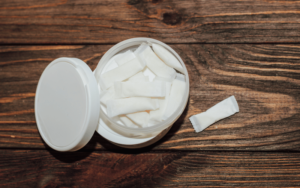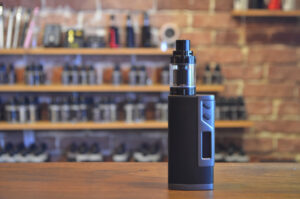What Parents Should Know About Vaping

Written by Oliver Norman, Content Marketing Manager, LiQuid
An unavoidable issue in the vaping industry right now is young people gaining access to devices, which has received regular reporting from the media. Despite strict controls on vaping products here in the UK, the sudden rise of disposable vapes to the height of popularity has made them highly desirable for many under-18s in particular.
This is of course a significant concern – there can be serious consequences for the health of children who vape, particularly given misunderstandings about the nicotine content of disposable devices.
While there is plenty of data emerging that positions vaping as a potentially impactful support on a person’s journey to quit smoking, there are still many unanswered questions about long-term effects. This is largely because vaping has only risen to popularity relatively recently., while tobacco smoking has been around for hundreds of years.
The problem we now face has been spurred on by the introduction of a new type of vaping device: disposable vapes. These are small, non-recyclable, single-use devices, available in brightly coloured designs and highly desirable fruity and sweet flavours. All of these features have been blamed for their staggering appeal to youngsters.
The issue is still building, as young people are being motivated by their peers and social media platforms like TikTok to get their hands on these trendy vaping devices. It has been noted in multiple surveys that in some areas of Britain, as many as one in five 15-year-olds have tried or regularly use disposable vapes specifically – with few to none reporting that they use more traditional, reusable devices and bottled e-liquid.
If you are concerned your child might be a part of that statistic, vaping brand LiQuid has compiled some important facts to note:
What is in a disposable vape?
All disposables on the market contain a special kind of e-liquid called nic salts. Nicotine is naturally alkaline, which is the reason it has a throat hit. When nic salts are manufactured, the nicotine in them is modified to have a neutral pH.
This makes them very smooth, even at the highest strengths permitted by law (20mg). Nic salts can be vaped easily, even by someone young who otherwise would find such a strength off-putting.
Combine this smoothness with the sweet and enticing flavours and it is easy to see why youngsters often misunderstand or misrepresent the risk they are taking – “it tastes really nice and doesn’t make me cough, so it can’t be that bad”.
Don’t be fooled by the 2%
Without prior knowledge, a 2% nicotine content may sound very low, and data suggests both adults and children are susceptible to this mistake. Disposable vapes almost always describe their strength as 2%, and rarely come in lower concentrations.
However, while this may sound like a small amount, the reality is that 2% is the same as 20mg, the maximum legal limit in the UK.
A standard 2% 500 to 600-puff disposable vape bar contains the same amount of nicotine as around 50 cigarettes – yet it can be consumed easily in one day or less, as the contents are so smooth and sweet.
Access is easy, even from well-known stores
During the height of the disposables boom in 2021, Action on Smoking and Health (ASH) carried out a youth survey of 11 to 18-year-olds, while the International Tobacco Control (ITC) authority led a similar youth study of those aged 16 to 19 who had vaped in the past 30 days. Participants were asked where they had gotten their hands on disposable vapes.
Just under a quarter (24.8%) of the young people in the ASH survey said they were given vapes by friends. The majority however have indeed been buying them:
- 22.1% of the youths surveyed said they bought them from newsagents.
- 22.1% said they bought them online.
- 16.1% reported buying a disposable vape from a big supermarket.
In the ITC youth survey, it was revealed that, among 16 to 19-year-olds:
- 64.3% reported owning their own vaping product.
- 37.5% reported being given vapes.
- 32.1% bought them in shops.
- 23.3% bought them online.
What to watch out for
Keep an eye out for the following signs your child may be vaping:
- An oddly sweet aroma in their presence or on their clothing.
- Any small, brightly coloured, pen shaped tubes left in their room or in their pockets/bags.
- Small bits of silicone; even if your child is hiding their vape, they may easily forget about these little bungs that must be removed when opening a new disposable vape.
- Making habitual trips to a particular store with friends when they previously did not have a preference.
- New health issues arising, such as coughing or wheezing.
You can also speak to your child’s school for support, as Action on Smoking and Health have produced a large resource of educational materials and guidance to help schools and parents deal with vaping, with advice on how to properly approach and police it among children and teens.
Sources and Resources:
https://ash.org.uk/resources/view/use-of-e-cigarettes-among-young-people-in-great-britain
https://www.gov.uk/government/publications/nicotine-vaping-in-england-2022-evidence-update
https://www.gov.uk/government/publications/vaping-in-england-evidence-update-february-2021





